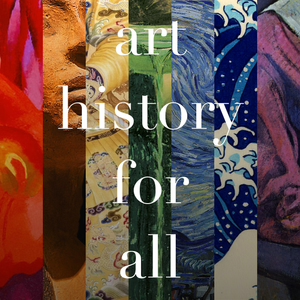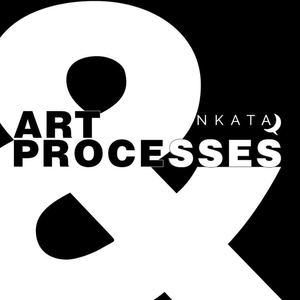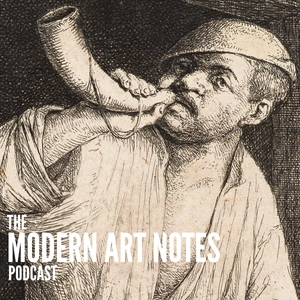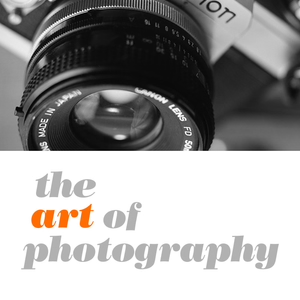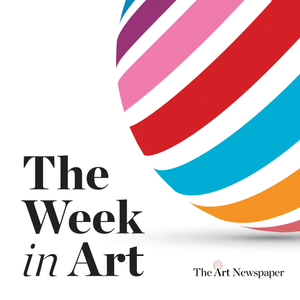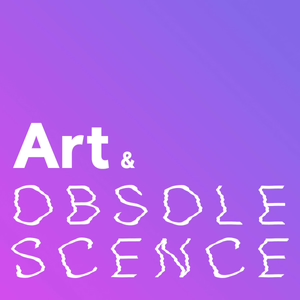
Carol Mancusi-Ungaro
03/07/23 • 42 min
2 Listeners
For this episode we are back in the conservation lab, visiting with Carol Mancusi-Ungaro, Melva Bucksbaum Associate Director for Conservation and Research at the Whitney Museum of American Art. If you were to visit the Whitney today and see the lab and the department that Carol leads, you might find it hard to believe that none of it existed back when she joined the Whitney. In 2001 Carol not only became the museum’s first director of conservation, but also its first staff conservator. In our chat we hear all about the incredible work that Carol has done over the past 20+ years at the Whitney, but the story goes much further back, prior to arriving at the Whitney, Carol spent a prior 20+ stint as the first conservator at the Menil Collection in Houston. Having originally trained and studied art that was centuries old, at the Menil Carol suddenly found herself dealing with modern and contemporary art and all the special and unique challenges that emerge when a conservator is faced with art where the paint has barley just dried. Carol found that talking directly to artists and their collaborators about the practical and technical aspects of their work was crucial in her work as a conservator — long before this was a common thing for conservators to do. This interview practice was eventually formalized and became the Artist Documentation Program, generating hours upon hours of footage of Carol and her former colleagues chatting with artists like Ann Hamilton, Ed Ruscha, Sarah Sze, Josh Kline, just to name a few. Today artist interviews have become a central part of conservation practice, so I was very excited to sit down with Carol, to interview the interviewer and hear what she has learned over decades as a leader the field of conservation.
Links from the conversation with Carol
> Artist Documentation Project: https://adp.menil.org/
> The Whitney Replication Committee: https://www.newyorker.com/magazine/2016/01/11/the-custodians-onward-and-upward-with-the-arts-ben-lerner
Get access to exlusive content - join us on Patreon!
> https://patreon.com/artobsolescence
Join the conversation:
https://www.instagram.com/artobsolescence/
Support artists
Art and Obsolescence is a non-profit podcast, sponsored by the New York Foundation for the Arts, and we are committed to equitably supporting artists that come on the show. Help support our work by making a tax deductible gift through NYFA here: https://www.artandobsolescence.com/donate
For this episode we are back in the conservation lab, visiting with Carol Mancusi-Ungaro, Melva Bucksbaum Associate Director for Conservation and Research at the Whitney Museum of American Art. If you were to visit the Whitney today and see the lab and the department that Carol leads, you might find it hard to believe that none of it existed back when she joined the Whitney. In 2001 Carol not only became the museum’s first director of conservation, but also its first staff conservator. In our chat we hear all about the incredible work that Carol has done over the past 20+ years at the Whitney, but the story goes much further back, prior to arriving at the Whitney, Carol spent a prior 20+ stint as the first conservator at the Menil Collection in Houston. Having originally trained and studied art that was centuries old, at the Menil Carol suddenly found herself dealing with modern and contemporary art and all the special and unique challenges that emerge when a conservator is faced with art where the paint has barley just dried. Carol found that talking directly to artists and their collaborators about the practical and technical aspects of their work was crucial in her work as a conservator — long before this was a common thing for conservators to do. This interview practice was eventually formalized and became the Artist Documentation Program, generating hours upon hours of footage of Carol and her former colleagues chatting with artists like Ann Hamilton, Ed Ruscha, Sarah Sze, Josh Kline, just to name a few. Today artist interviews have become a central part of conservation practice, so I was very excited to sit down with Carol, to interview the interviewer and hear what she has learned over decades as a leader the field of conservation.
Links from the conversation with Carol
> Artist Documentation Project: https://adp.menil.org/
> The Whitney Replication Committee: https://www.newyorker.com/magazine/2016/01/11/the-custodians-onward-and-upward-with-the-arts-ben-lerner
Get access to exlusive content - join us on Patreon!
> https://patreon.com/artobsolescence
Join the conversation:
https://www.instagram.com/artobsolescence/
Support artists
Art and Obsolescence is a non-profit podcast, sponsored by the New York Foundation for the Arts, and we are committed to equitably supporting artists that come on the show. Help support our work by making a tax deductible gift through NYFA here: https://www.artandobsolescence.com/donate
Previous Episode

Shirin Neshat
Today we are visiting with the one and only Shirin Neshat, who hardly needs introduction. If you’ve ever taken an art history class that covers video art, photography, international cinema, or for that matter contemporary opera, you’ve definitely seen Shirin’s work. Since her debut exhibition in 1993 at Franklin Furnace, Shirn’s work has offered a deeply personal yet universal perspective on womanhood, power, corruption, trauma, and the female body as the battleground of social and political manipulation. All of this in Shirin’s work is of course informed very much by her experience as an Iranian immigrant, who moved to the US at age seventeen just prior to the revolution, and since then has lived ostensibly in exile. These themes in her work however are quite universal, which is something Shirin spoke to expensively in our chat when we discussed her latest work which just so happens to be on view as we speak. Her latest exhibition at Gladstone Gallery titled The Fury is on view until March 4th, you’ve got a whole month to check it out, and this show features new works including a photo series and a large video installation in Shirin’s signature black and white with two channels of video on opposite walls, that harkens all the way back to her iconic 1998 video installation Turbulent. We discuss all this and more in our chat, as well as Shirin’s perspective on the ongoing protests and movement in Iran sparked by the death of Masha Amini — which of course is deeply related to the themes that have been present in Shirin’s work for decades.
Today’s episode, and the many more artist interviews coming your way this year was made possible thanks to generous support from wonderful folks at the Kramlich Art Foundation.
Links from the conversation with Shirin
> The Fury: https://www.gladstonegallery.com/exhibition/10596/the-fury/installation-views
Get access to exlusive content - join us on Patreon!
> https://patreon.com/artobsolescence
Join the conversation:
https://www.instagram.com/artobsolescence/
Support artists
Art and Obsolescence is a non-profit podcast, sponsored by the New York Foundation for the Arts, and we are committed to equitably supporting artists that come on the show. Help support our work by making a tax deductible gift through NYFA here: https://www.artandobsolescence.com/donate
Next Episode

Nikita Gale
This month we’re in the studio visiting with contemporary artist Nikita Gale. Gale's work employs objects and materials like barricades, concrete, microphone stands, and spotlights to address the ways in which space and sound are politicized. Last year in episode 32 we visited with gallerist Ebony L. Haynes, director of 52 Walker, and it was in preparing for that conversation that I visited the gallery, and had the treat of seeing Nikita Gale’s work in person for the first time in the exhibition titled End of Subject. I wasn’t really sure what to expect as the documentation online was deliciously cryptic — installation views showed a space sparsely populated by metal panels on the wall, and on the floor numerous sets of metal bleachers that appeared to have been crushed, thrown on their sides, spotlights strewn about the room, and wires — lots and lots of wires everywhere. With the beautiful wooden floors and opens space of the gallery, it looked as though a dance piece or some performance art had gone horribly wrong. This was all I knew, as well as the fact that there was some kind of sound element to the piece. When I arrived, the gallery looked just as it did in the photos online, but there was no sound. I was tiptoeing through the empty gallery, when suddenly the whole space sprung to life — voices erupted through the space, and the previously inert spotlights began to dance around the room. Over the course of several minutes I witnessed an incredible choreography of sound and light, until silence and stillness eventually returned to the room for an extended period of time before a new score and choreography eventually emerged. I sat in the room for an hour watching people come and go — some visitors who missed the performance entirely, some who only saw one or the other. It was incredible to see the space repeatedly transform from a spectacle, to a space where the viewers themselves became the performance. Being a conservation nerd of course my mind went directly to wondering how in the world a piece like this might be documented and migrated through generations of technology over decades, and I knew I just had to have the artist on the show to find out. Tune in to hear Nikita’s story.
If you like this episode you’ll love
Episode Comments
Generate a badge
Get a badge for your website that links back to this episode
<a href="https://goodpods.com/podcasts/art-and-obsolescence-203309/carol-mancusi-ungaro-28535893"> <img src="https://storage.googleapis.com/goodpods-images-bucket/badges/generic-badge-1.svg" alt="listen to carol mancusi-ungaro on goodpods" style="width: 225px" /> </a>
Copy
